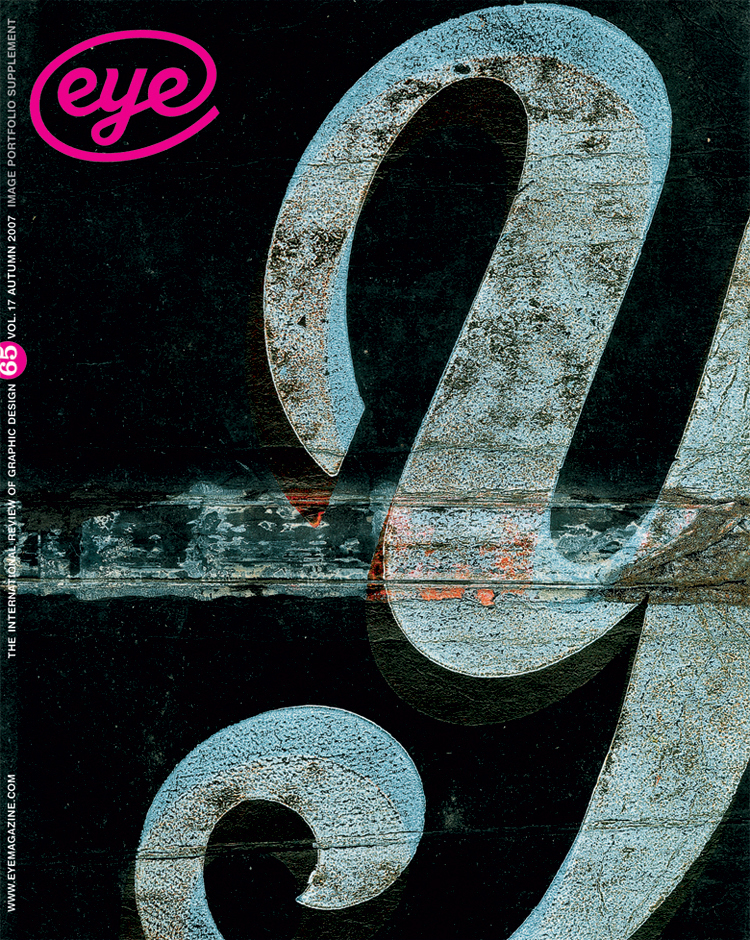Autumn 2007
The man on every French bookshelf
Massin et Le Livre / Massin and the Book
By Roxane Joubert and Margo Rouard-Snowman. Introduction by Steven Heller. Archibooks, €25The French designer known as Massin (he removed his first name, Robert, in the early days of his career), became internationally famous thanks to two books published respectively in 1964 and 1970. The first was his graphic staging of Ionesco’s play La Cantatrice chauve, a key piece of the absurdist movement. With this work, Massin aimed for an international audience straightaway, simultaneously producing an American version (The Bald Soprano, 1965) and one for the British market (The Bald Prima Donna, 1966). The second book was the influential La Lettre et l’image (Letter and Image), an imaginative catalogue of figurative alphabets from the eighth to the twentieth century, edited by Massin after fifteen years of research. These two masterpieces of typographic eccentricity became hot items among designers and art directors on both sides of the Atlantic, and were especially influential in America, where they helped trigger the post-functionalist approach of graphic design that eventually culminated in the eclecticism of the late 1980s and 1990s.
Inevitably, the public’s perception of Massin’s work has been distorted by the success of these two books. To those outside of France who knew him at all, it may have seemed that Massin was a two-hit wonder; many may have failed to realise that he was, in all probability, the most prolific book cover designer of postwar France, and that every bookshop in the world selling French books carried titles he designed.
An exhibition held last spring at the Ecole Nationale Supérieure des Arts Décoratifs (ensad) in Paris offered a great introduction to the full bandwidth of Massin’s work. It showed a compact yet rich selection from the thousands of works that were produced by this one-man graphic factory. While the show itself has probably been seen by few foreigners, the accompanying bi-lingual catalogue, Massin et Le Livre / Massin and The Book, is a lasting document of the extensive research done by the show’s curators, Roxane Joubert and Margo Rouard-Snowman. Having been given full access to Massin’s personal and public archives, they unearthed loads of unique material that had never been shown in public before.
Massin’s most visible contribution to the French publishing landscape is his landmark design of the Folio paperback series from Gallimard, where he was art director for two decades. He conceived the series’ signature white covers with freestanding illustrations, which he painted himself or commissioned; all in all, he designed or art directed more than a thousand of them. Preceding the Folio series was a more diverse, and more experimental series – his design for the Club du Meilleur Livre, a Gallimard imprint. Here, he and other designers were given great freedom to change book covers into veritable works of graphic art.
Within his impressive body of work, the Ionesco books – La Cantatrice chauve and an even more experimental book, Délire à Deux – remain the pièces de résistance. Among the documents featured in the exhibition as well as the catalogue, is a wealth of material documenting the research and experimentation leading up to the design of La Cantatrice chauve: the original stills of the actors, sketches, paste-ups, manually distorted type. As Steven Heller reports in the intro, the production of the latter involved three dozen condoms on to which the texts were photographically transferred to be able to stretch them in all directions.
The catalogue’s text section consists of three articles that, although short, paint a precise portrait of Massin and his influences. Joubert’s concise overview of the designer’s life and work is the longest and most informative of the pieces; Margo Rouard-Snowman’s appreciation overlaps Joubert’s piece in a curious way, but does offer some great Massin quotes from an interview with a long-time friend, Belgian designer Michel Olyff. Heller’s introduction seems to lean a bit too heavily on an essay by design critic Laetitia Wolff, from which it borrows several quotes; what makes it an interesting piece is that it is also a first-hand testimonial from a New Yorker who was deeply involved with the underground press scene of the late 1960s – where Massin’s Bald Soprano was a crucial influence.
Massin and The Book is a compact, medium-sized paperback with a lucid design by Ellen Zhao and a good alternation of smaller and larger reproductions. This was probably the ideal format to allow ensad to bring out the catalogue under its own imprint (in collaboration with Archibooks) while keeping it affordable. However, the man who is arguably the greatest living book designer in France deserves a major publication that would offer room for more and larger reproductions, and perhaps also for writings by the master himself. It can only be hoped that France will eventually find the funds for such a tribute.
Jan Middendorp, designer, writer and author of Dutch Type, Berlin
First published in Eye no. 65 vol. 17 2007
Eye is the world’s most beautiful and collectable graphic design journal, published for professional designers, students and anyone interested in critical, informed writing about graphic design and visual culture. It is available from all good design bookshops and online at the Eye shop, where you can buy subscriptions and single issues.

